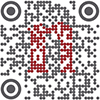|
|||||||||||
|
|||||||||||
|
Hello Nature readers, |
|||||||||||

|
|||||||||||
| Bite marks on the skeleton’s pelvis (top left) could suggest that a lion dragged the combatant away by his hip after being incapacitated, researchers suggest. (Thompson et al./PLoS ONE (CC BY 4.0)) | |||||||||||
Roman fighters really did face lionsBite marks found on a skeleton could be the first physical evidence that humans fought lions in the Roman empire. The young man's skeleton — excavated from a UK cemetery where gladiators might have been buried — had puncture marks on the pelvis. Working with London Zoo, researchers compared the impressions with bite marks on horse bones made by big cats such as cheetahs, lions and tigers and found a match with lion bites. The discovery “[reshapes] our perception of Roman entertainment culture in the region”, says anthropologist and study co-author Tim Thompson. BBC | 5 min readReference: PLOS One paper |
|||||||||||
Hundreds of papers hide their AI useScience sleuths have identified hundreds of cases in which artificial intelligence (AI) tools seem to have been used in the preparation of scientific papers without disclosure. In a preprint analysis of 500 such papers, 13% of them appeared in journals belonging to large publishers, such as Elsevier, Springer Nature and MDPI. In some cases, the papers have been silently corrected — the hallmark AI phrases removed without acknowledgement. This type of quiet change is a potential threat to scientific integrity, say some researchers. Nature | 7 min readReference: arXiv preprint (not peer reviewed) Nature’s news team, including this newsletter, is editorially independent of its publisher, Springer Nature. |
|||||||||||
| |||||||||||
|
|||||||||||
|
|||||||||||
Whole-genome sequencing for rare diseasesWhen trying to diagnose a rare disease, clinicians often sequence a pre-determined set of genes to try and find a disease-causing variant. This can stretch to a person’s entire exome — all of their protein-coding genes. But the exome only makes up 1.5% of our genome. Whole-genome sequencing (WGS) can fill in the rest, capturing variants that might influence how genes are expressed. As WGS becomes cheaper and researchers develop tools that help analyse the data, many geneticists are calling for it to be offered much earlier in the diagnostic process for rare diseases. Nature | 12 min readThis editorially independent article is part of Nature Outlook: Medical diagnostics, a supplement produced with financial support from Seegene. |
|||||||||||
|
|||||||||||

|
|||||||||||
| Geoscientist Jemma Wadham studies the ever-changing glaciers of the Arctic, analysing their melt water for beneficial or toxic chemicals and exploring the methane-producing microorganisms beneath them. “I see myself as a glacier-forensics expert, uncovering what has happened beneath the glacier, like investigating a crime,” she says. “Eventually, we hope that our research in Norway will contribute to scientists’ understanding of how glaciers affect carbon cycling and marine life in other global settings, such as the Canadian Arctic and Patagonia in South America.” (Nature | 3 min read) (Jacopo Pasotti for Nature) | |||||||||||
Quote of the day“I was so excited, I was trying to not start screaming in the lab.”Entomologist Anderson Lepeco hit the jackpot when he found an unusual specimen in a fossil collection at the University of São Paulo: a 113 million-year-old ant fossil — the oldest ant ever found. (Science | 4 min read) |
|||||||||||
|
|
|||||||||||
|
|||||||||||
|
|
|||||||||||
Free newsletters from NatureWant more? Update your preferences to sign up to our other Nature Briefing newsletters:
|
|||||||||||
Access Nature and 54 other Nature journals
Nature+ is our most affordable 30-day subscription, giving you online access to a wide range of specialist Nature Portfolio journals, including Nature. |
|||||||||||
|
|||||||||||
|
You received this newsletter because you subscribed with the email address: agawrylewski@gmail.com Please add briefing@nature.com to your address book. Enjoying this newsletter? You can use this form to recommend it to a friend or colleague — thank you! Had enough? To unsubscribe from this Briefing, but keep receiving your other Nature Briefing newsletters, please update your subscription preferences. To stop all Nature Briefing emails forever, click here to remove your personal data from our system. Fancy a bit of a read? View our privacy policy. Forwarded by a friend? Get the Briefing straight to your inbox: subscribe for free. Want to master time management, protect your mental health and brush up on your skills? Sign up for our free short e-mail series for working scientists, Back to the lab. Get more from Nature: Register for free on nature.com to sign up for other newsletters specific to your field and email alerts from Nature Portfolio journals. Would you like to read the Briefing in other languages? 关注Nature Portfolio官方微信订阅号,每周二为您推送Nature Briefing精选中文内容——自然每周简报。 Nature Portfolio | The Springer Nature Campus, 4 Crinan Street, London, N1 9XW, United Kingdom Nature Portfolio, part of Springer Nature. |



